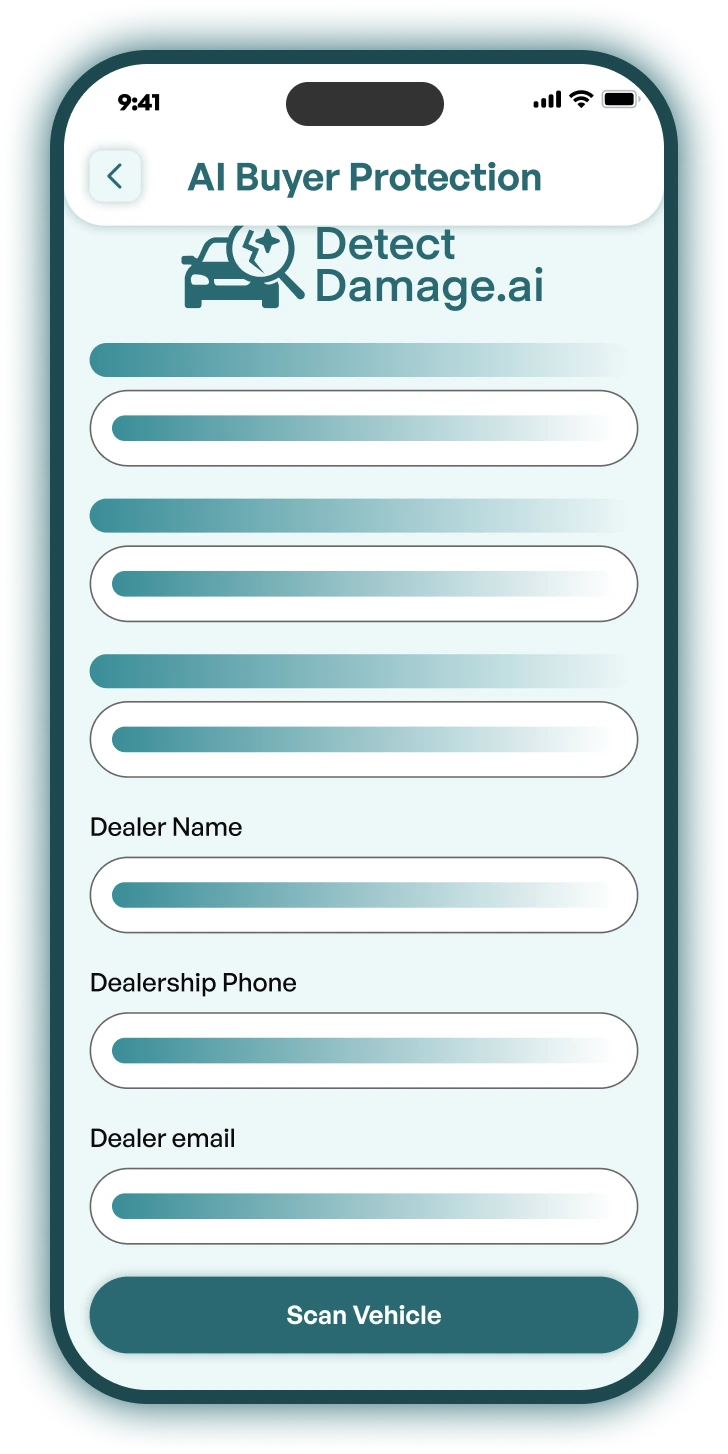What to Check When Buying a Car ?
When purchasing a car, it's essential to conduct a thorough inspection to ensure you're making a sound investment. Carefully examine the vehicle's exterior and interior, verify all documentation—including the V5C logbook, service history, and MOT certificate—and ensure that all features and functions work as expected. A test drive is also crucial to evaluate the car’s performance and handling.

To assist with your evaluation, use Detectdamage.ai to assess the vehicle’s condition. This advanced tool can quickly and accurately identify issues with the bodywork, helping you avoid costly surprises and negotiate more confidently.

Here's a more detailed breakdown:
1. Exterior
- Bodywork: Check for any dents, scratches, rust, or mismatched paint, paying attention to panel gaps and alignment.
- Tyres: Examine for wear, damage, and ensure they are matched. Check tread depth and look for uneven wear.
- Lights: Ensure all lights are working, including headlights, taillights, brake lights, indicators, and hazard lights.
- Glass: Check for chips, cracks, or damage to the windshield and windows.
- Wheels: Inspect for any damage or signs of kerb-scraping.
2. Interior
- Seats and Upholstery: Check for any damage, stains, or excessive wear.
- Dashboard and Controls: Verify all gauges, warning lights, and controls are functioning correctly.
- Electrics: Test all electrical features, including windows, mirrors, sunroof (if applicable), audio system, and air conditioning.
- Steering and Brakes: Ensure the steering wheel is aligned, and the brakes are responsive and smooth.
- Gears: Check for smooth gear changes, especially if it's a manual.
- Smell: Be aware of any unusual odors, such as musty or burnt smells, which could indicate a problem.
3. Under the Hood
- Fluids: Check levels of engine oil, coolant, brake fluid, and power steering fluid.
- Engine: Listen for any unusual noises when starting the engine and during the test drive.
- Battery: Ensure the battery is properly secured and the terminals are clean.
- Leaks: Look for any signs of leaks under the car or around the engine bay.
4. Documentation
- V5C Logbook: Verify the details match the car, including the VIN, engine number, and color.
- Service History: Check for a full service history and confirm any major services due soon.
- MOT Certificate: Ensure the car has a valid MOT and review any advisories.
- Proof of Purchase: Make sure you have the sales receipt or other proof of purchase.
5. Test Drive
- Engine Performance: Assess the engine's power and responsiveness.
- Braking: Check for even braking and any pulling to one side.
- Steering: Verify the steering is responsive and the wheel is aligned.
- Suspension: Listen for any unusual noises or excessive bouncing when driving over bumps.
- Handling: Check for any vibrations, pulling, or drifting during acceleration and deceleration.
6. Additional Tips
- Get an independent inspection: If you're unsure about anything, consider getting an independent inspection from a trusted mechanic.
- Haggle: Don't be afraid to negotiate the price, especially if you find any issues during your inspection.
- Compare prices: Ensure you're getting a fair price for the car by comparing it with similar vehicles on the market.
- Take your time: Don't rush the process. Take your time to thoroughly inspect the car and ask any questions you have.
- Be aware of scams: Be cautious of deals that seem too good to be true and avoid any high-pressure sales tactics.
By following these tips, you can ensure you're collecting a car in the condition you expect and are happy with the purchase.
Frequently Asked Questions
What to do next?
What to do next?
What to do next?
What to do next?
